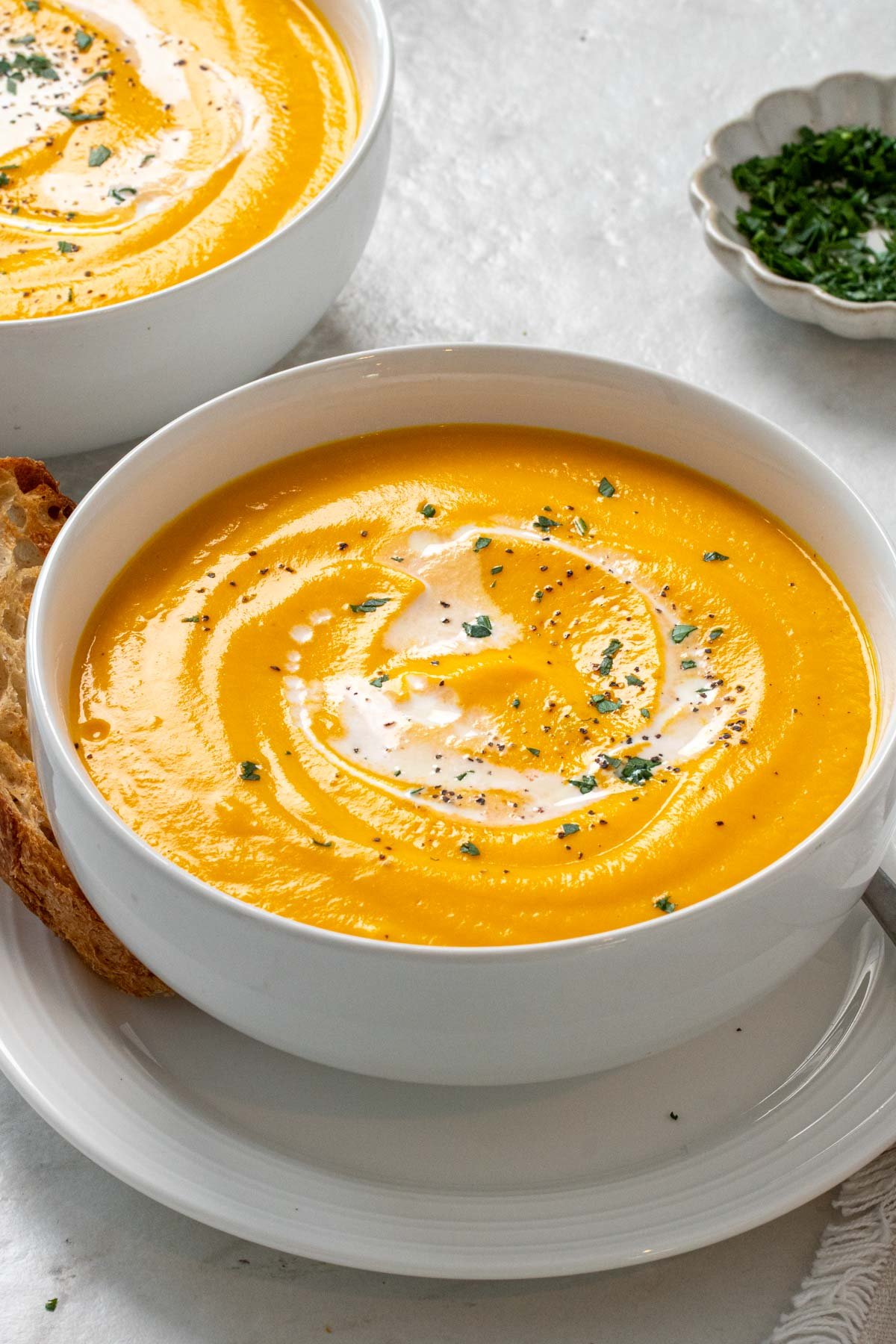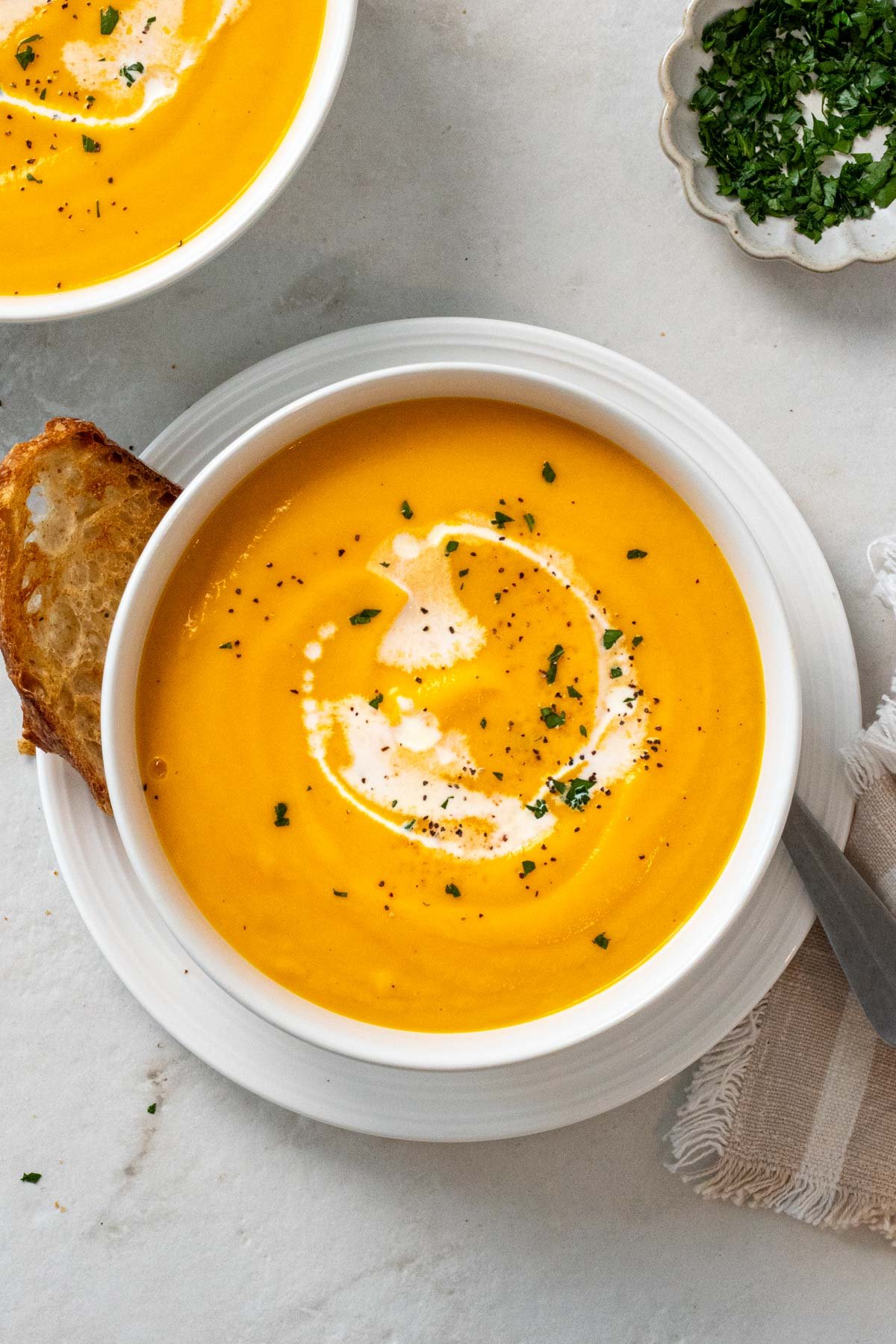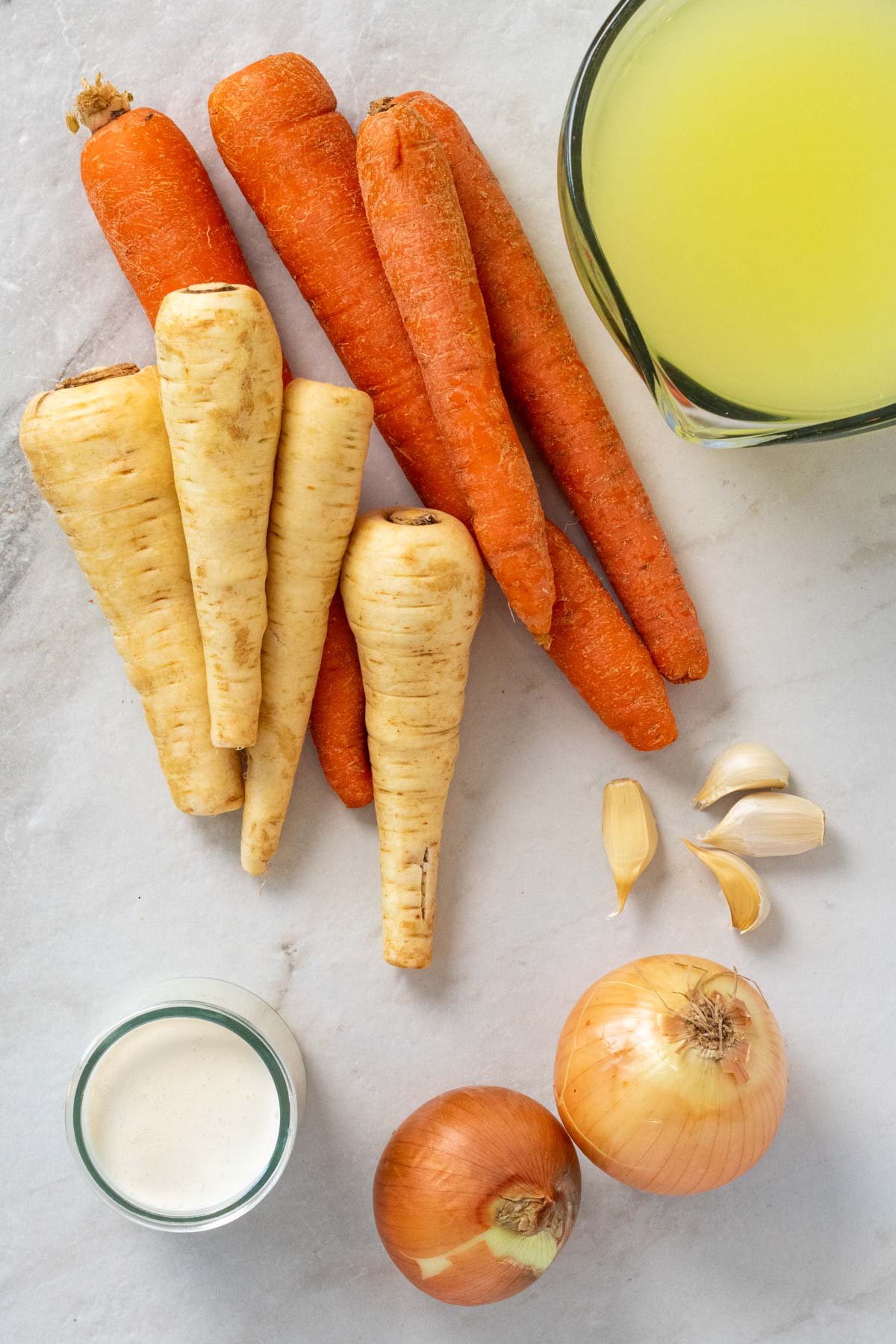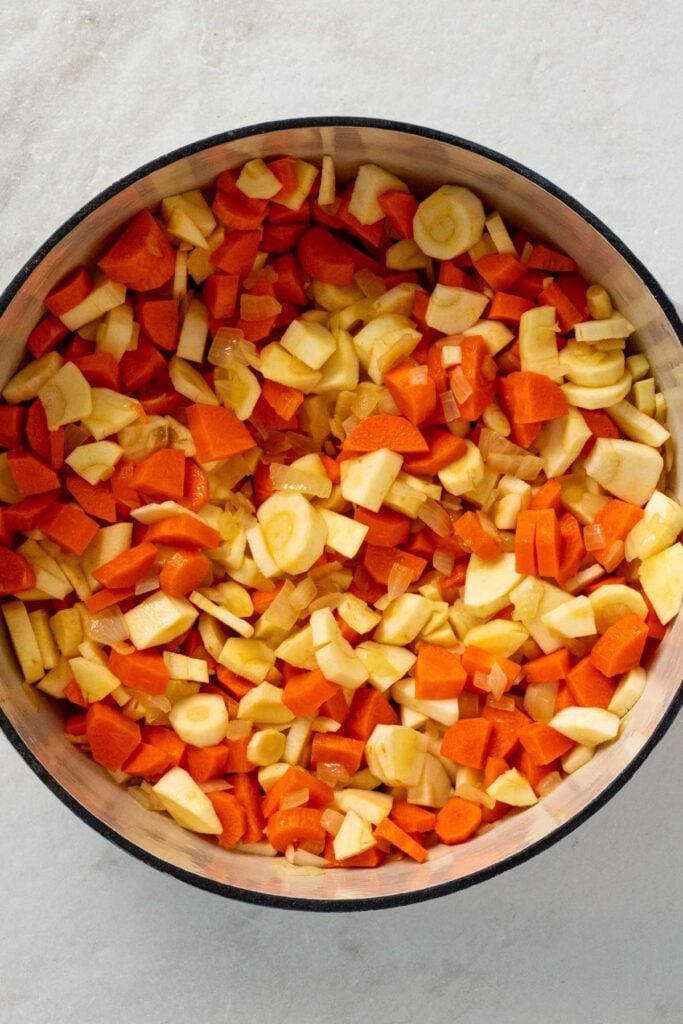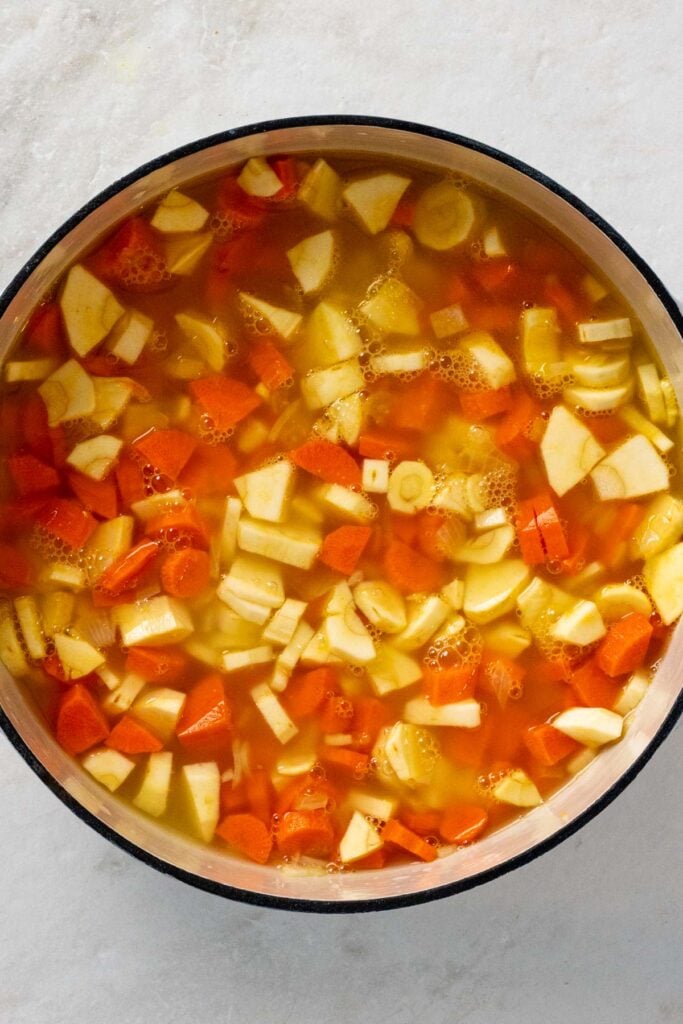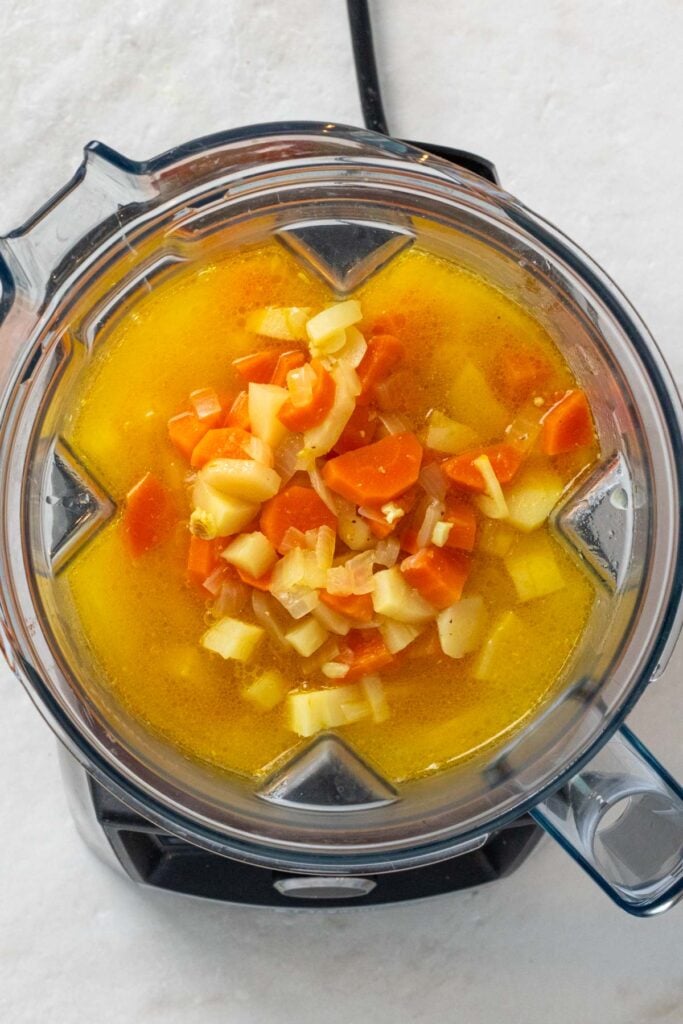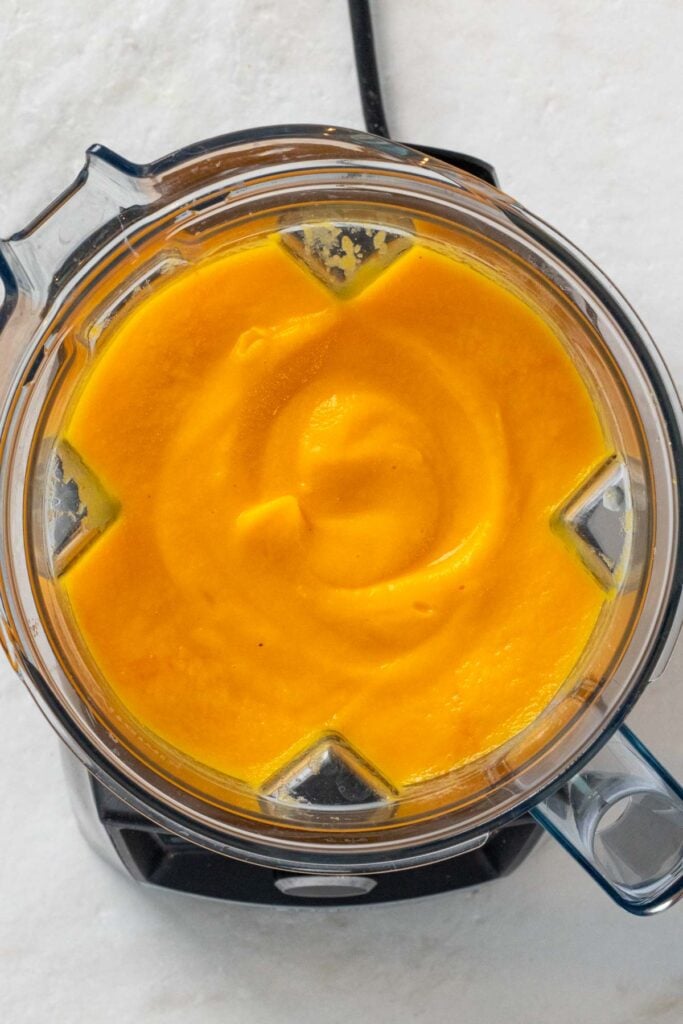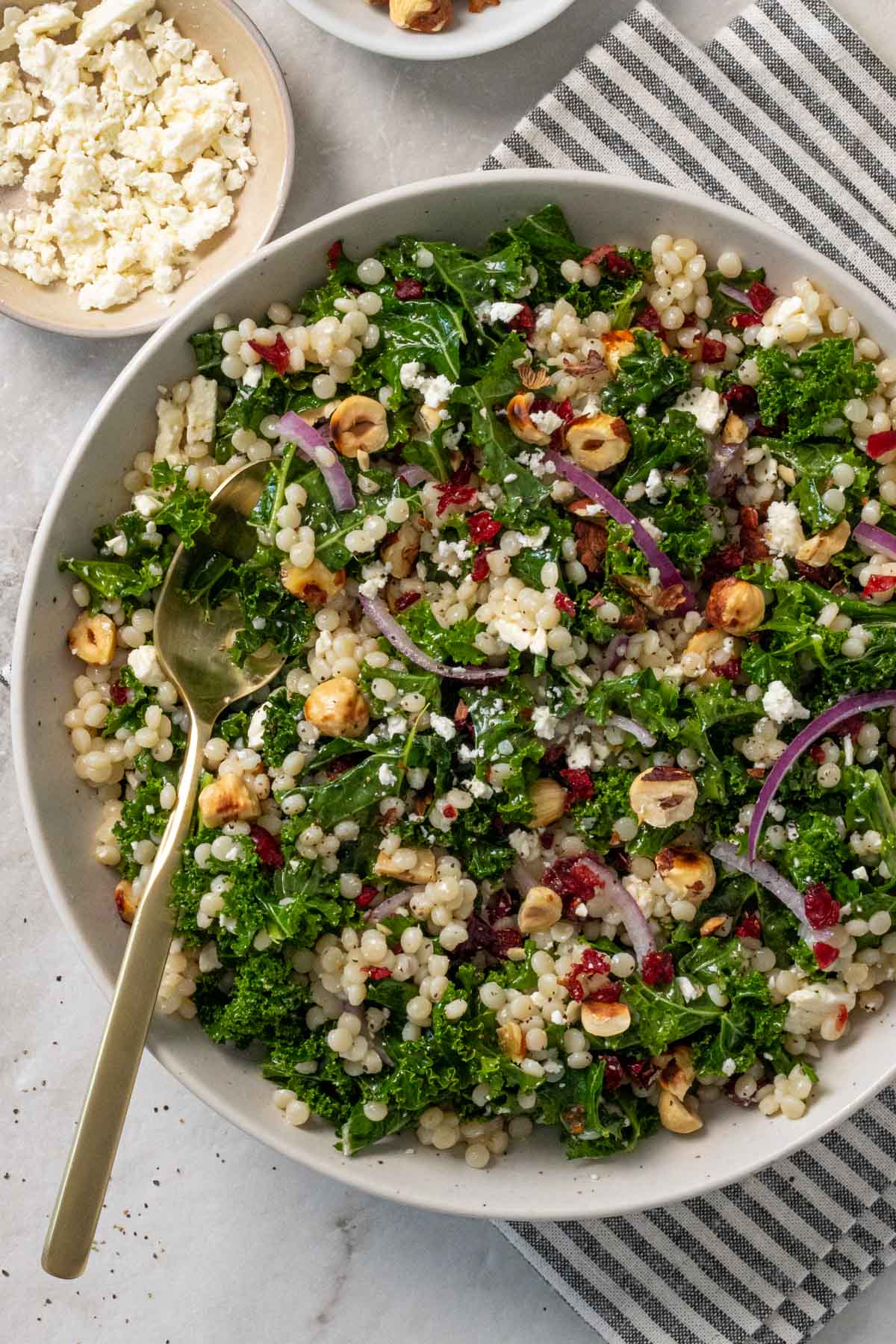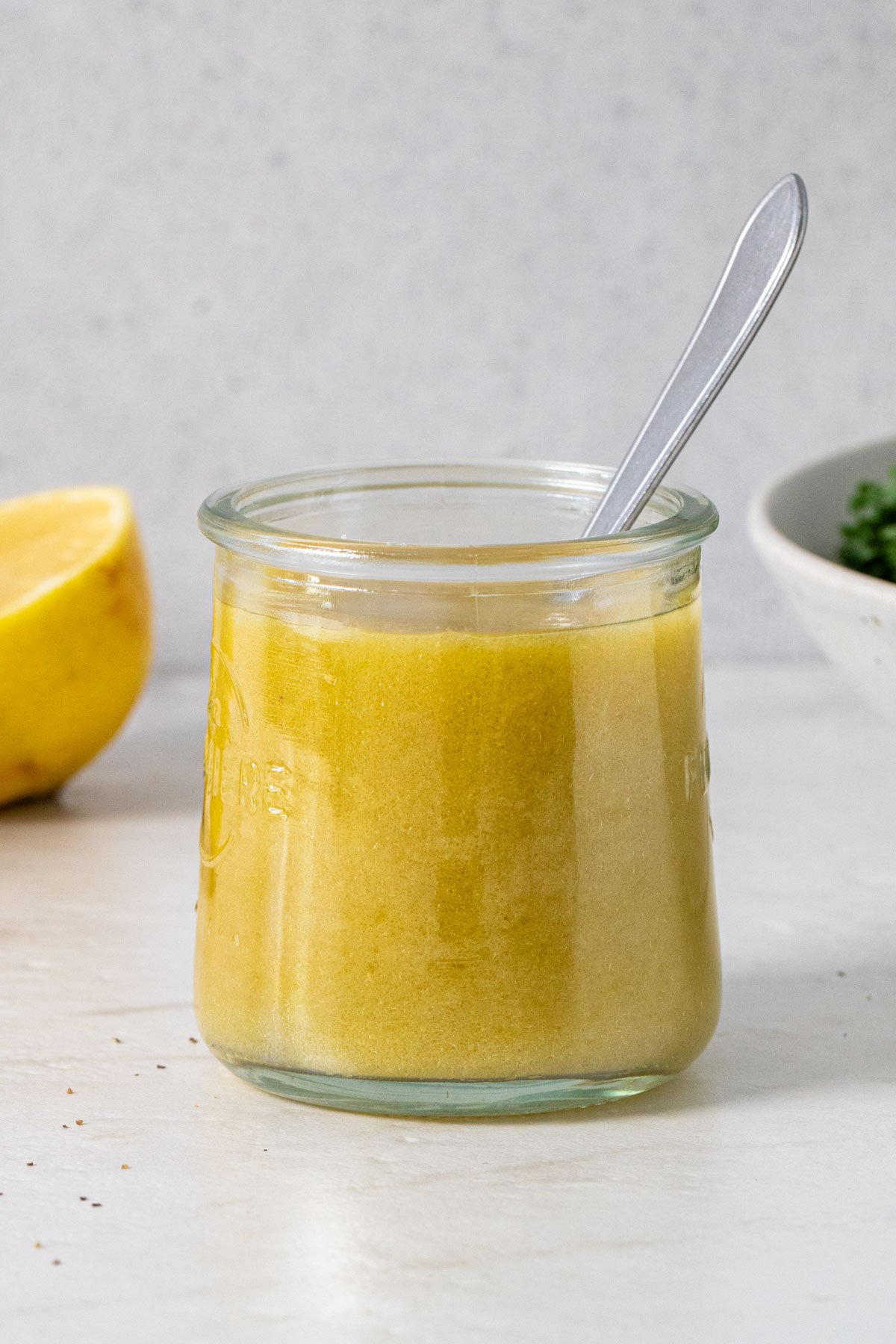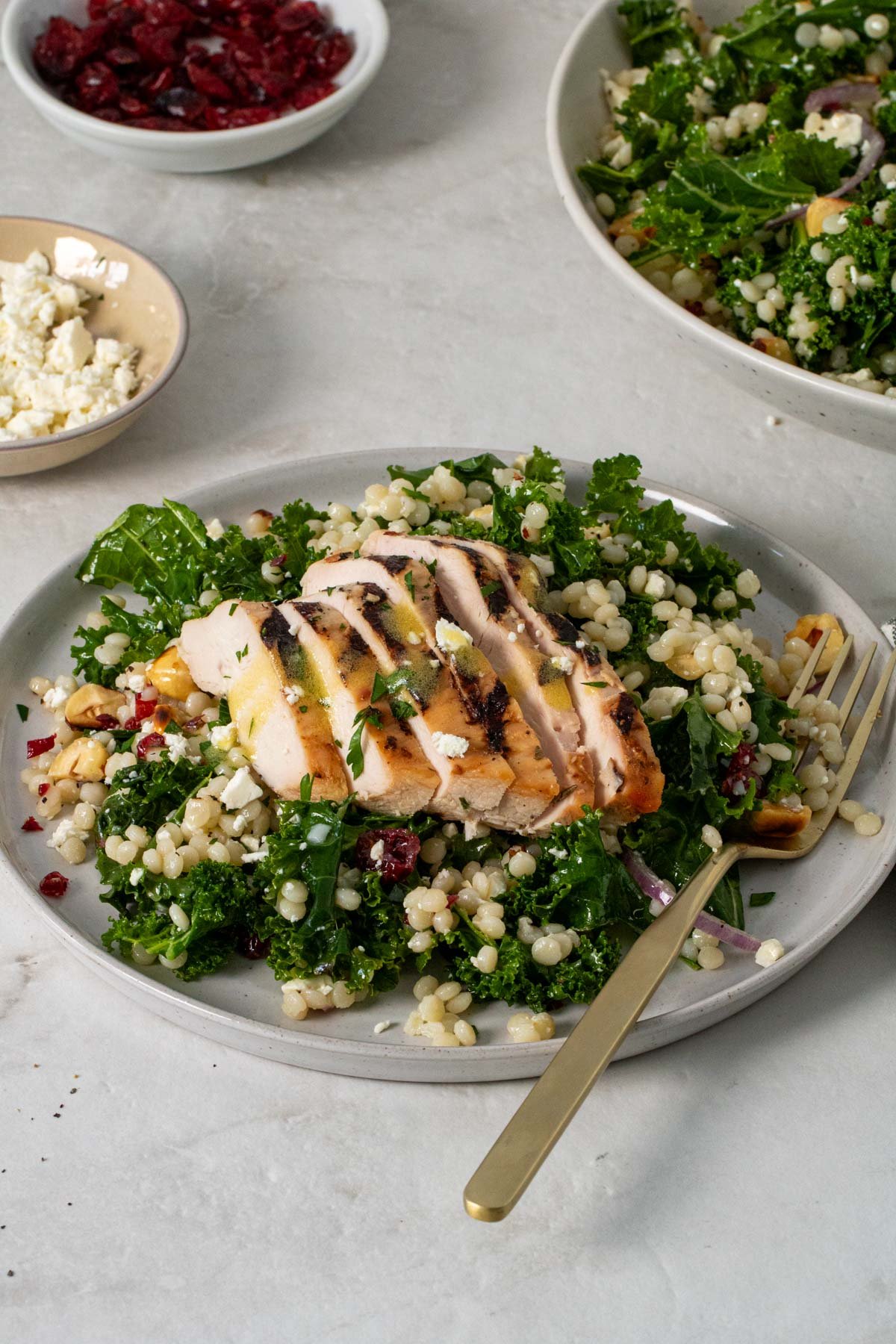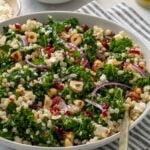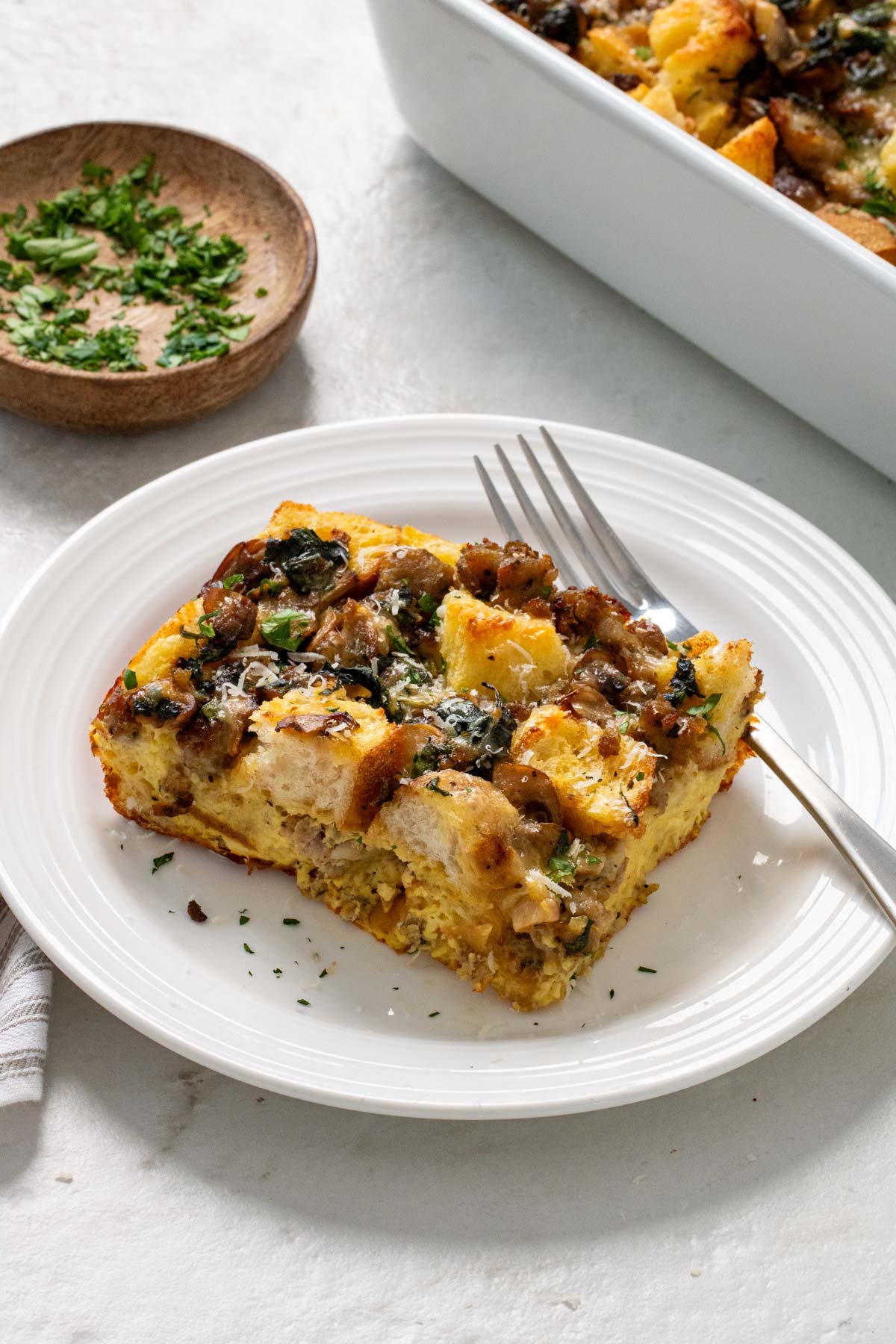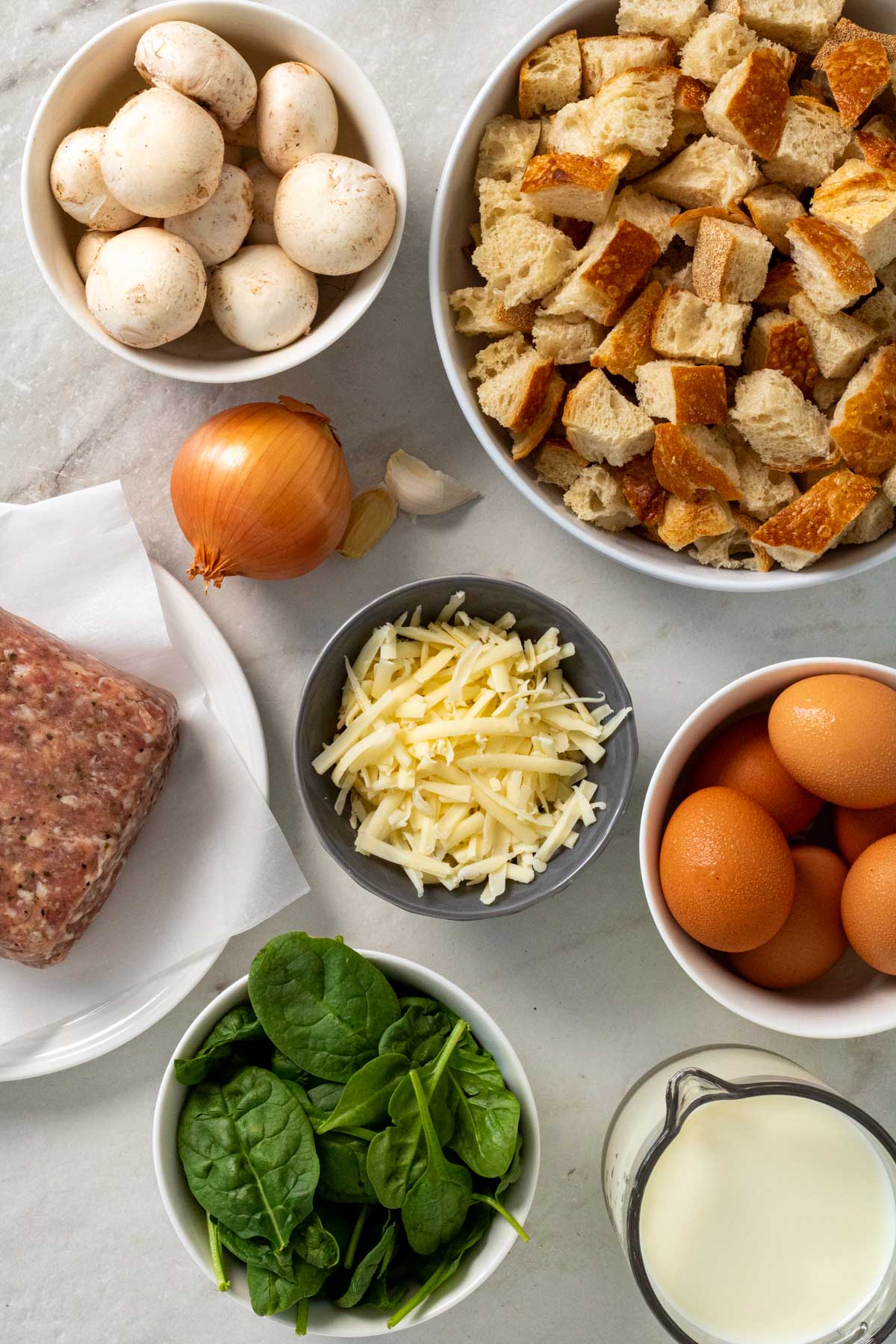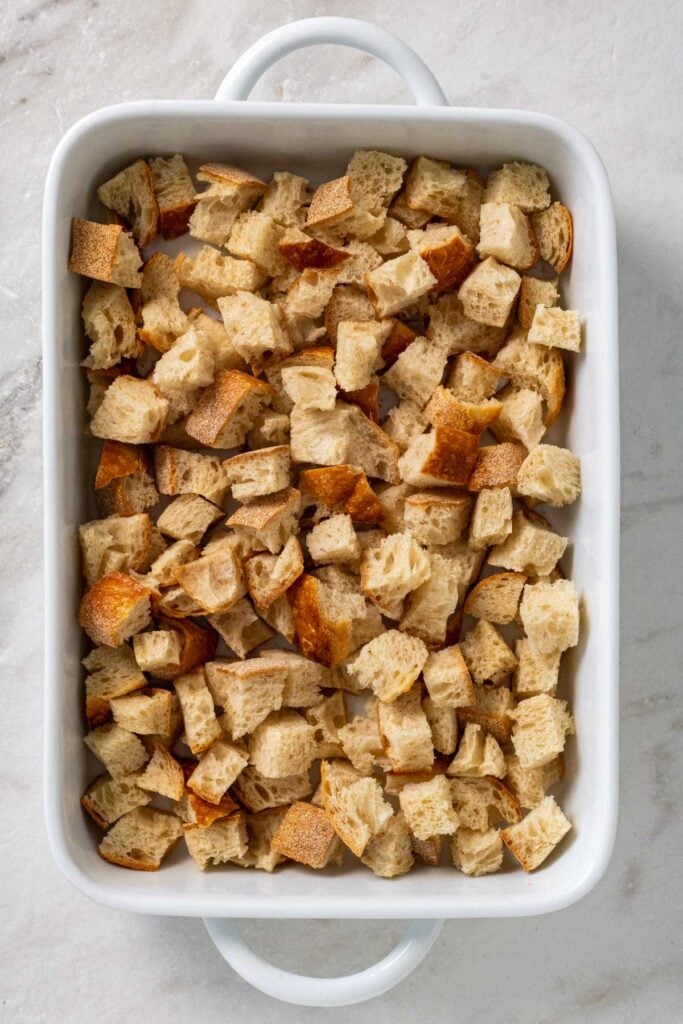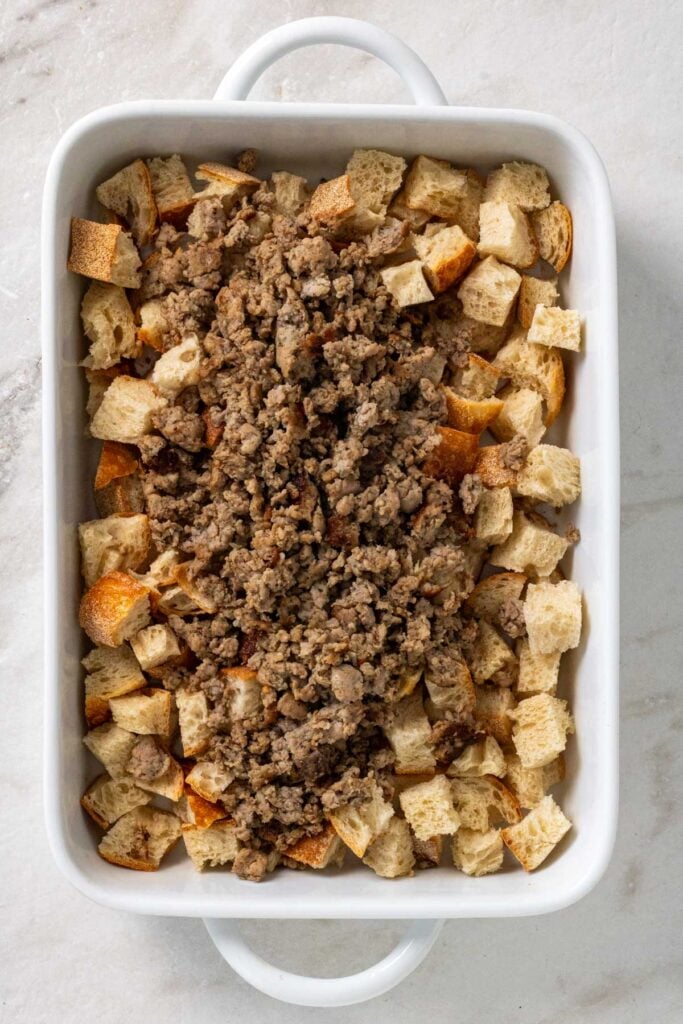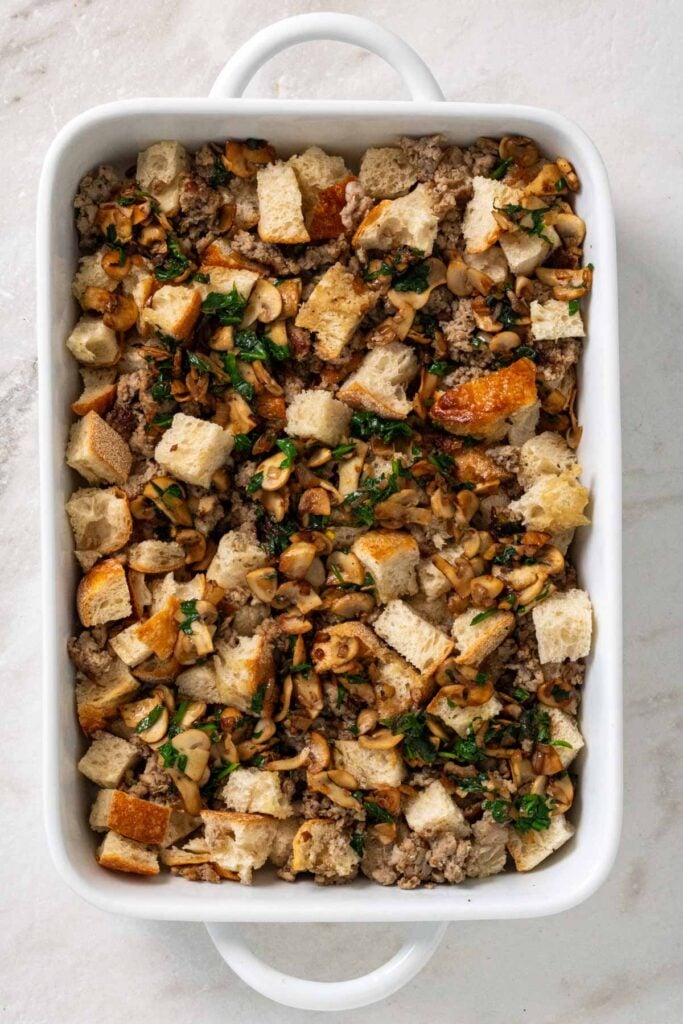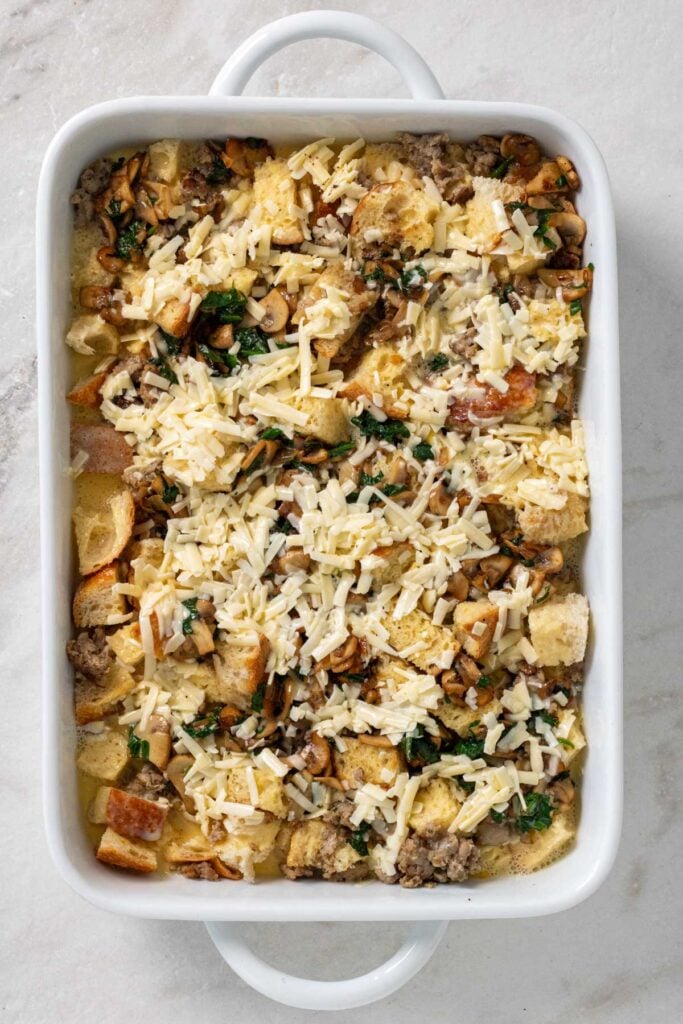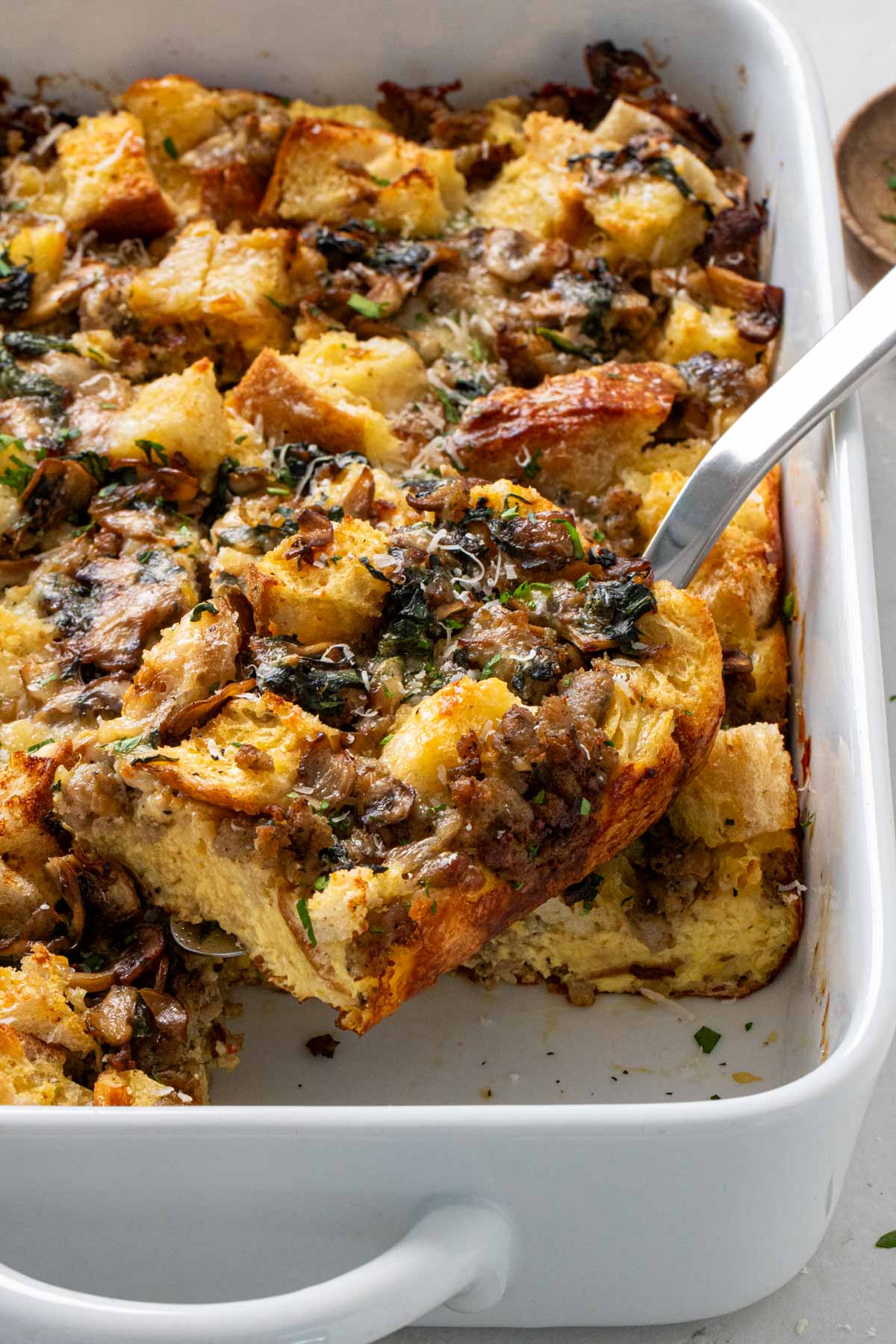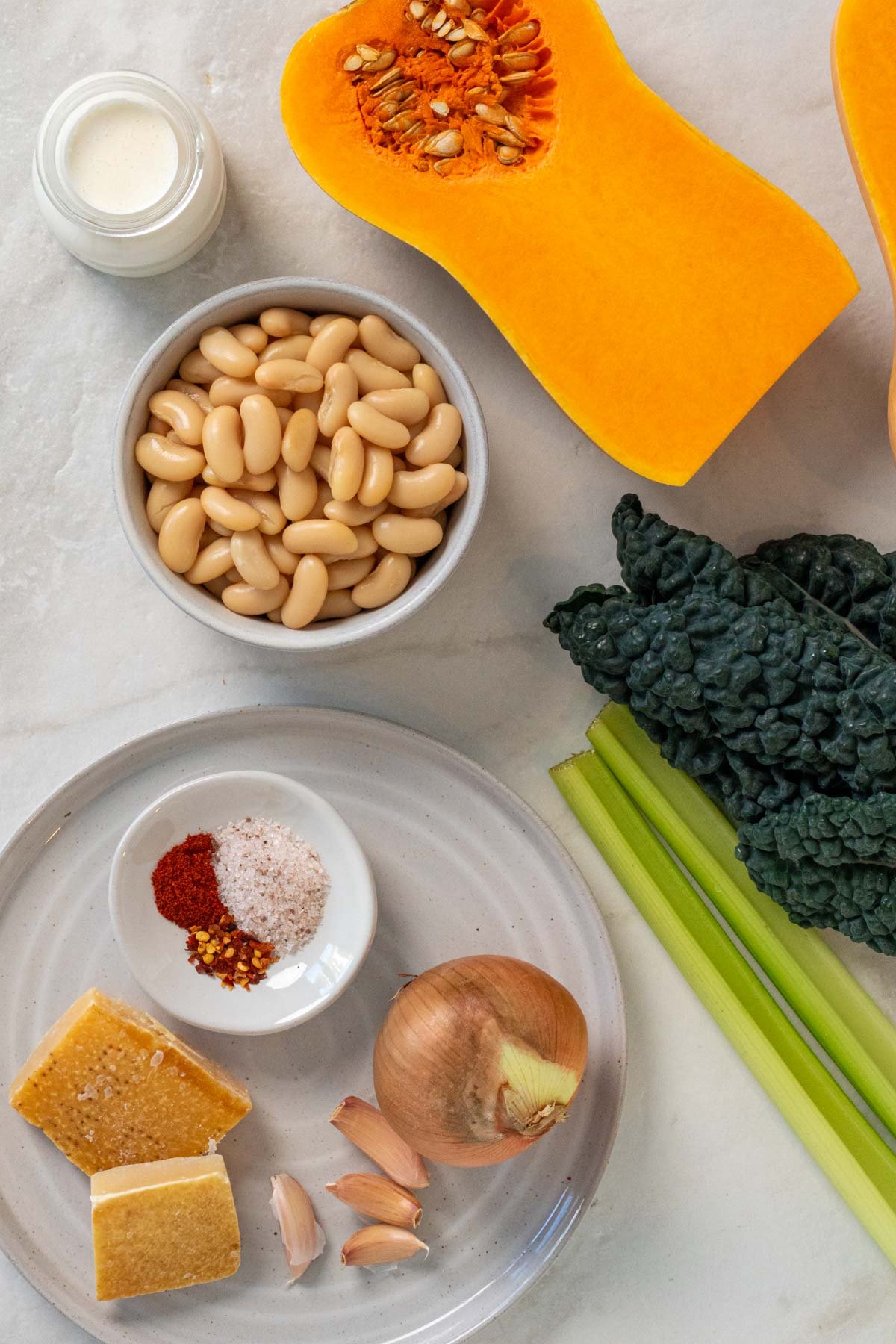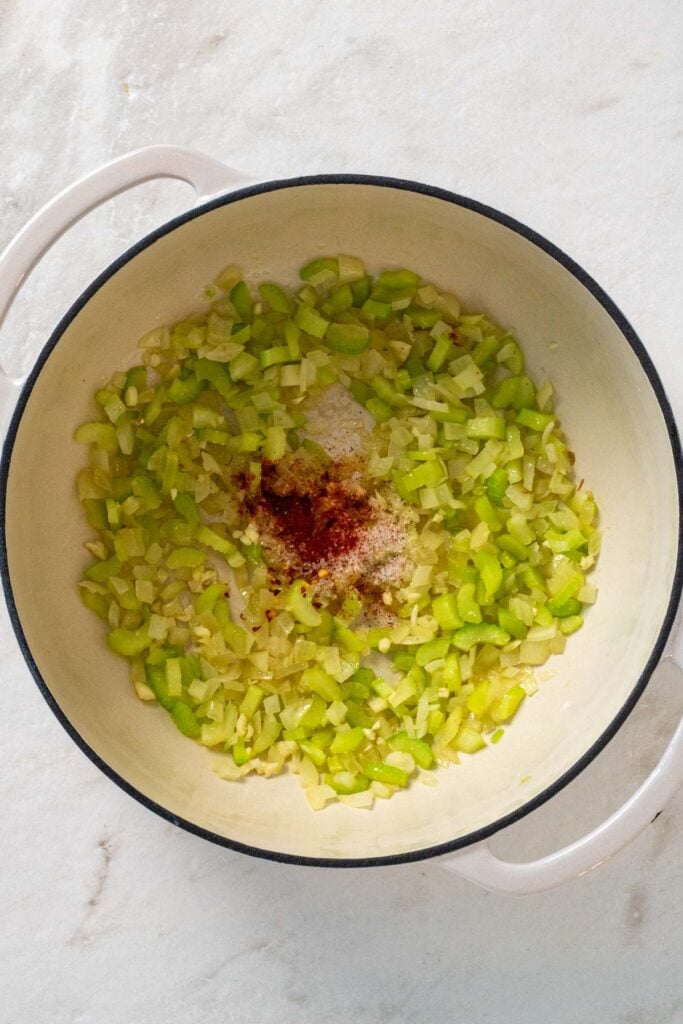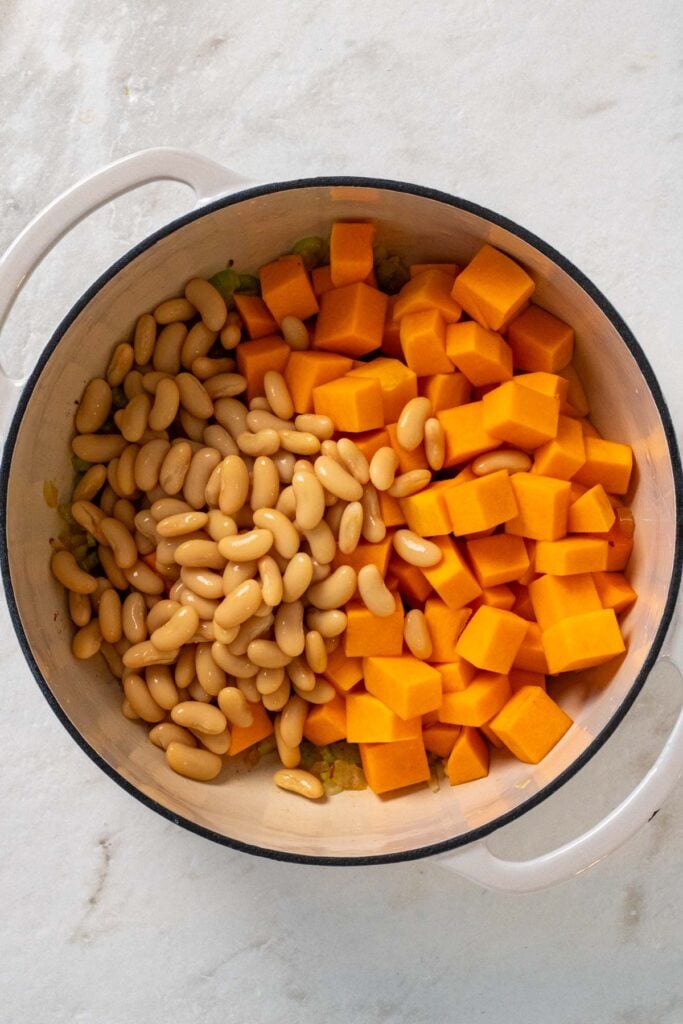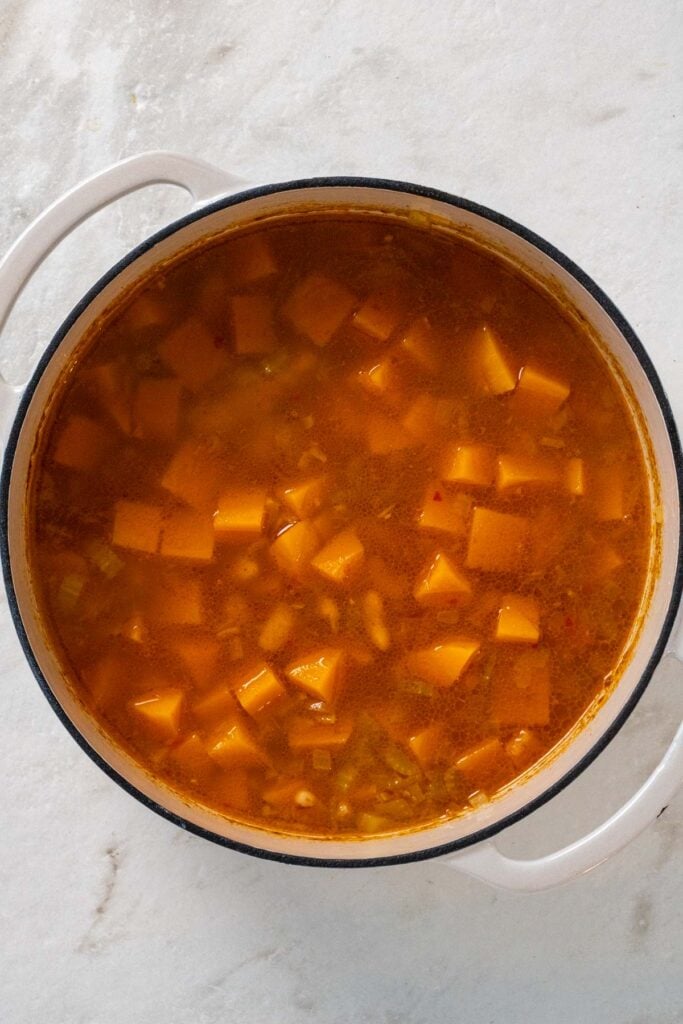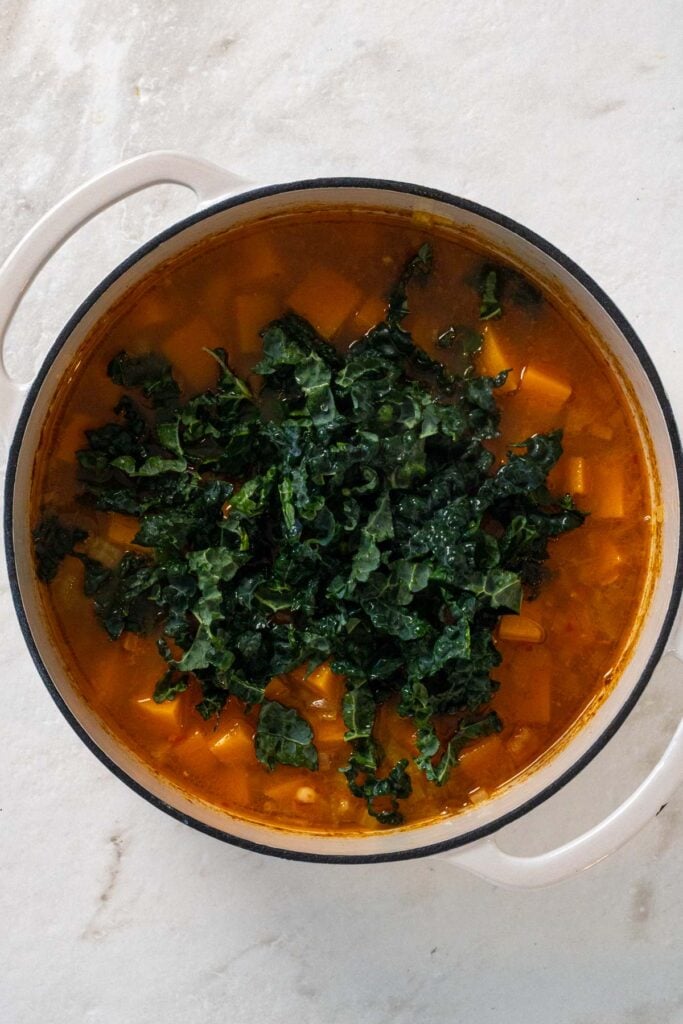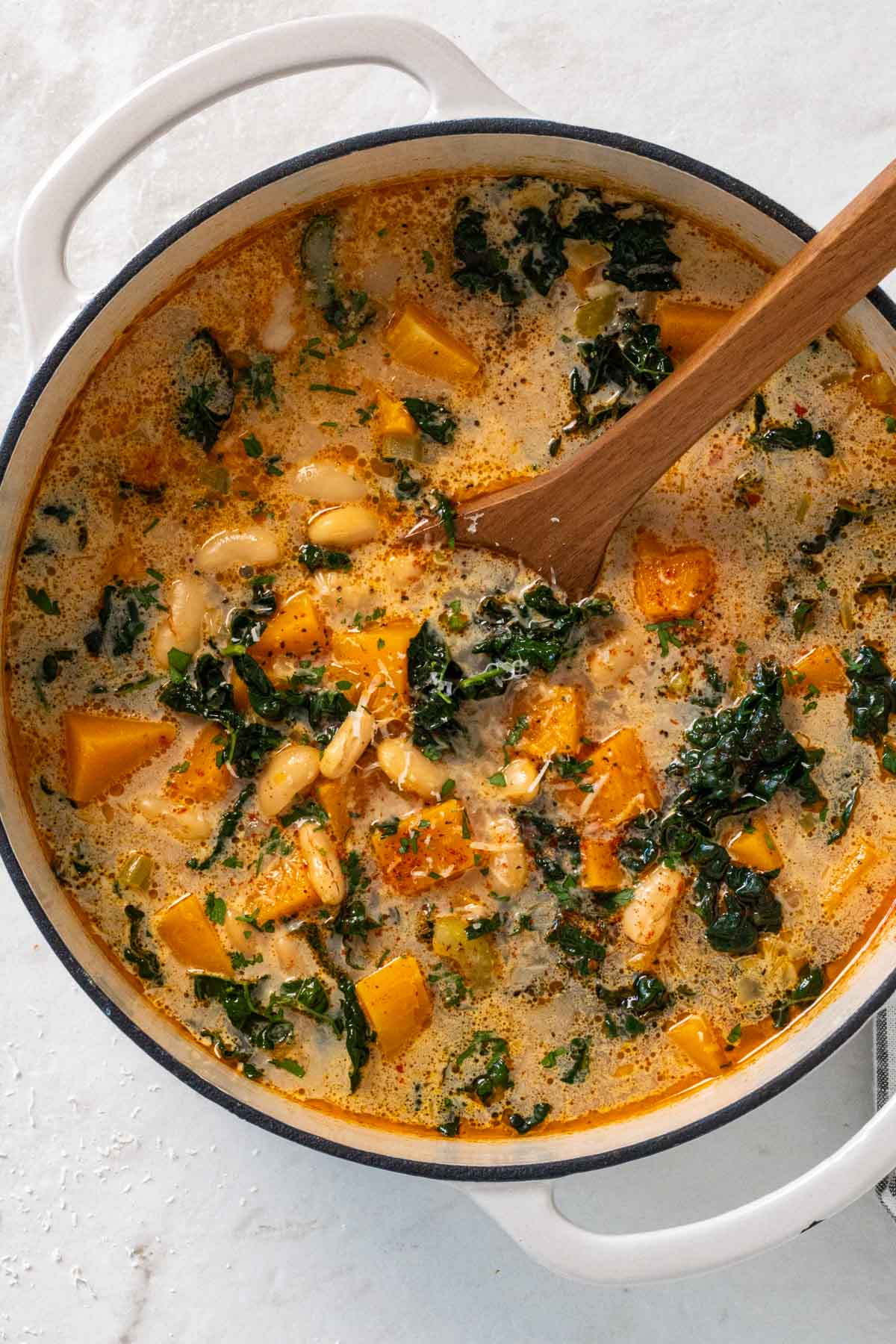Ready in 30 minutes and made with minimal ingredients, this ground turkey pasta bake is perfect for a quick and easy meal that is packed full of protein. Serve it with a salad and crusty bread for a healthy family dinner.
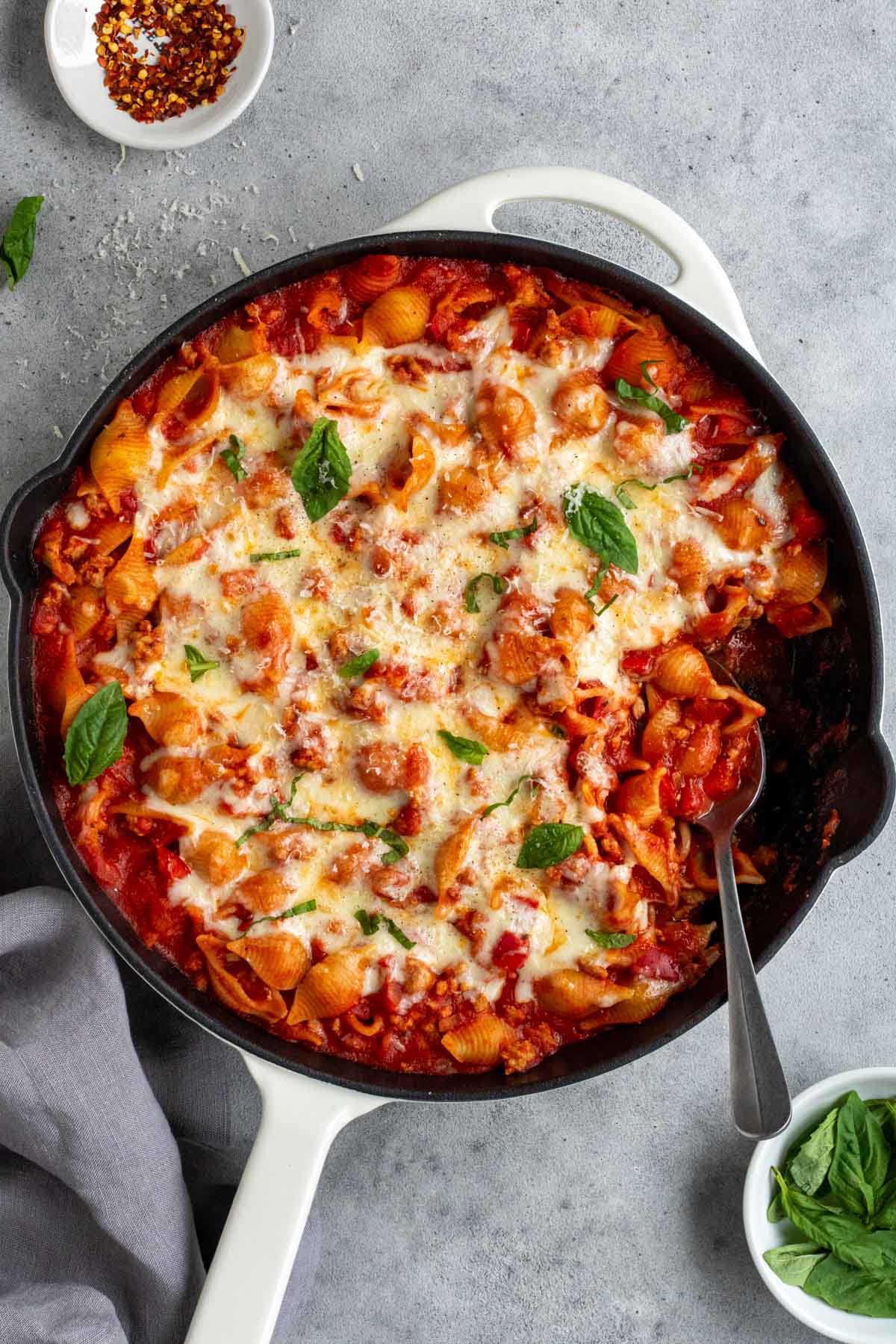
If you’re looking to add more lean protein to your diet, but still want a tasty dish, this ground turkey casserole is a great option. The use of ground turkey in this recipe ensures it’s high in protein and low in calories, while the pasta, herbs, and cheese tomato sauce ensure it’s satisfying and full of flavor.
Plus, it’s kid-friendly and it freezes well. So, not only can you serve up a crowd-pleasing dinner, but you can make it ahead of time, freeze it, and warm it up on busy nights when you just don’t have time to cook.
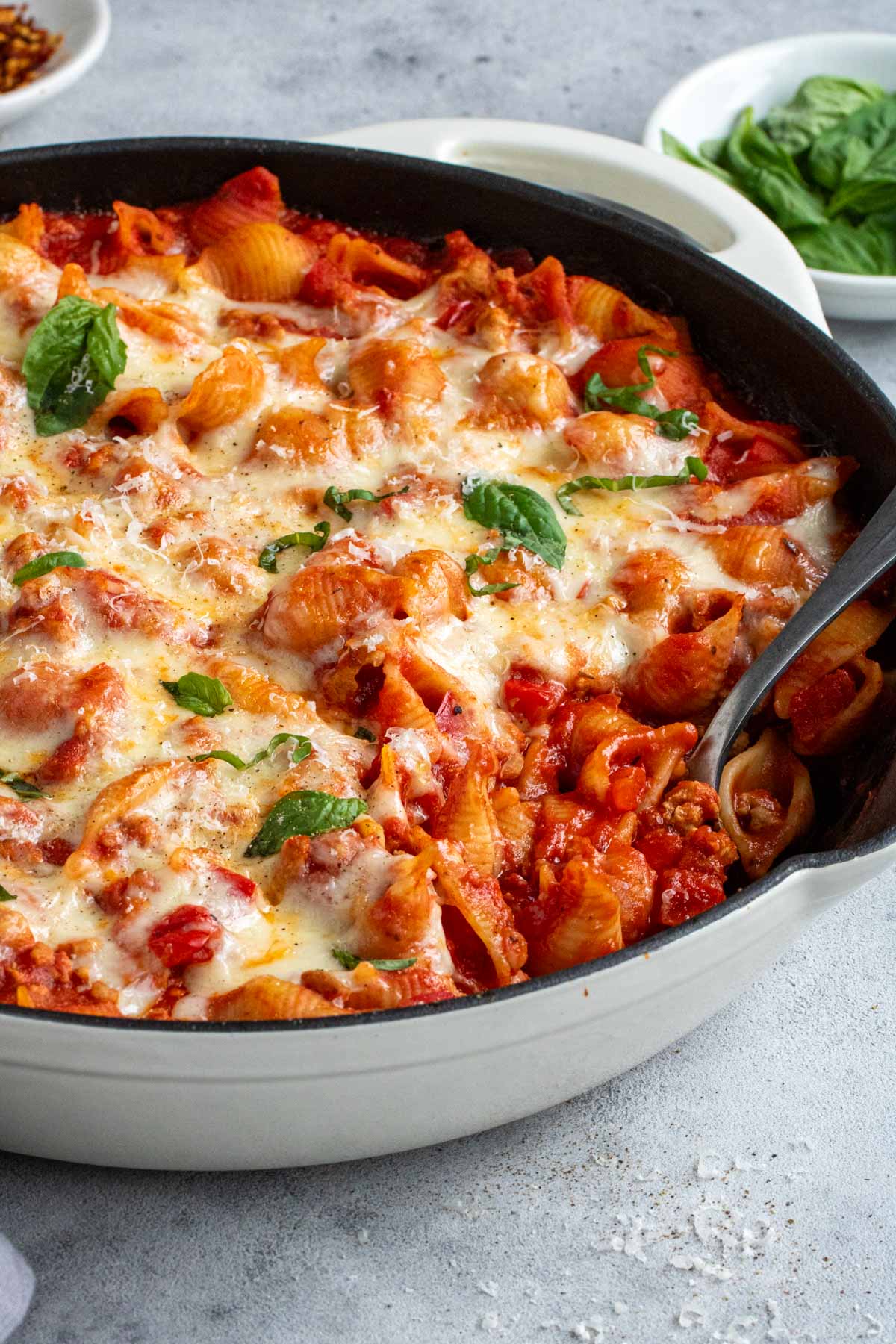
Why You’ll Love It
- Ready in 30 Minutes – This quick and easy recipe is perfect for a weeknight meal.
- High in Protein – The combination of ground turkey, pasta, and cheese, ensures that this recipe contains over 33 grams of protein per serving.
- Family Friendly – This creamy ground turkey pasta is a delicious meal the whole family can enjoy.
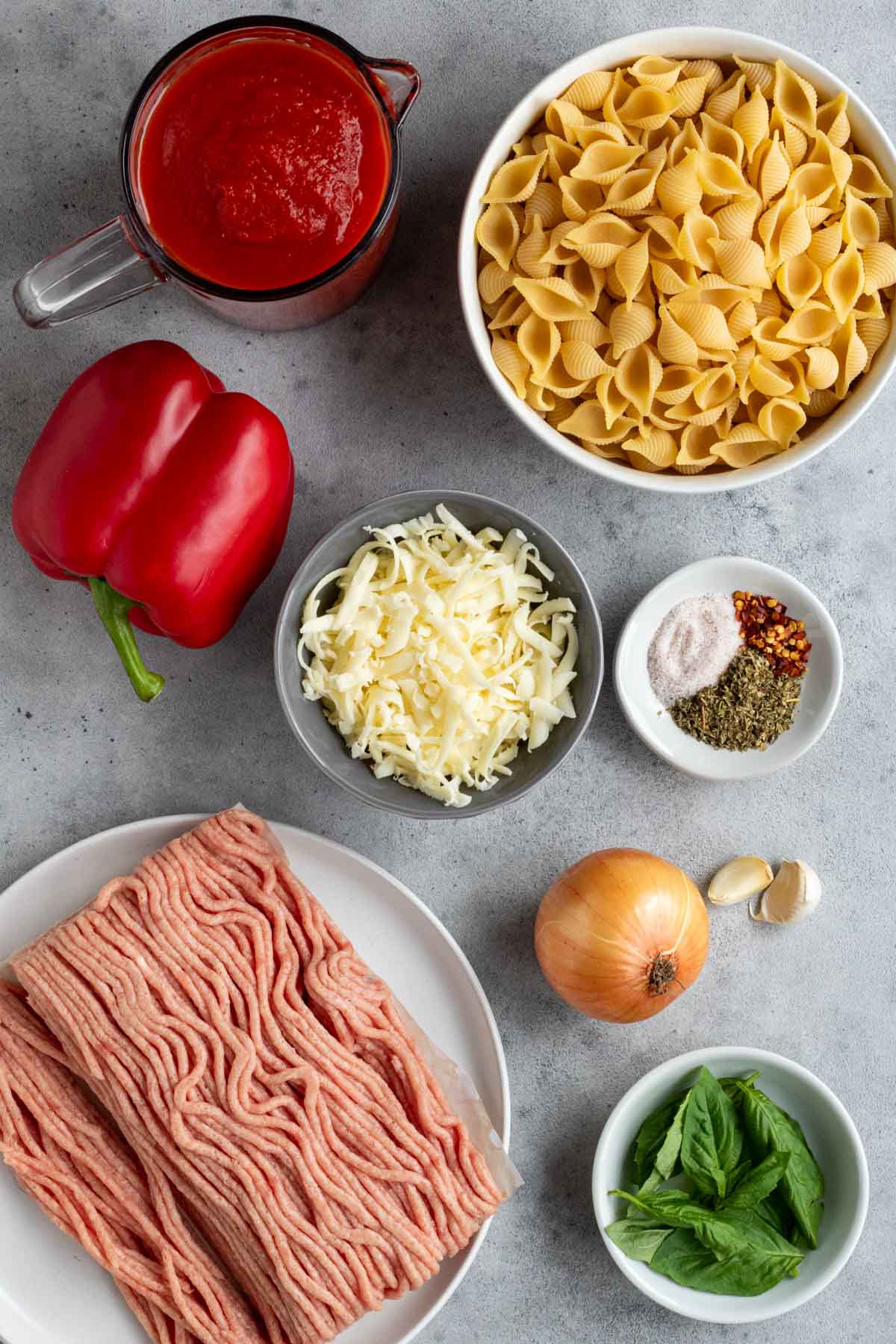
Ingredients + Substitutions
- Ground Turkey – To add some protein. I used lean ground turkey but extra lean ground turkey, ground turkey breast, ground chicken, lean ground beef, or ground sausage would also work well.
- Pasta – To add some complex carbohydrates. I opted for small shell pasta, but macaroni, fusilli, or penne pasta would all work well, and you can use regular or whole-wheat pasta if preferred.
- Onion and Garlic – To add flavor and fragrance. You can use onion powder and garlic powder if desired, see the notes section of the recipe card for details.
- Bell Pepper – To add some veggies. I used a red bell pepper but any color will work, or you can omit it if desired.
- Tomato Sauce – To make the pasta sauce. I used a can of crushed tomatoes, but diced tomatoes, passata, marinara sauce, or any tomato sauce will work.
- Italian Seasoning – To season the tomato sauce. If you don’t have Italian seasoning, a combination of dried oregano, basil, and thyme will also work, and you can add a pinch of red pepper flakes for spice if desired.
- Mozzarella Cheese – To add some healthy fats and top the pasta bake. If you don’t have mozzarella, cheddar cheese will also work well.
- Parmesan Cheese – While optional, you can finish the dish with freshly grated parmesan cheese.
- Fresh Herbs – While optional, I like to top the baked pasta with a bit of fresh parsley or fresh basil.
- Salt and Pepper – To season the ground turkey pasta.
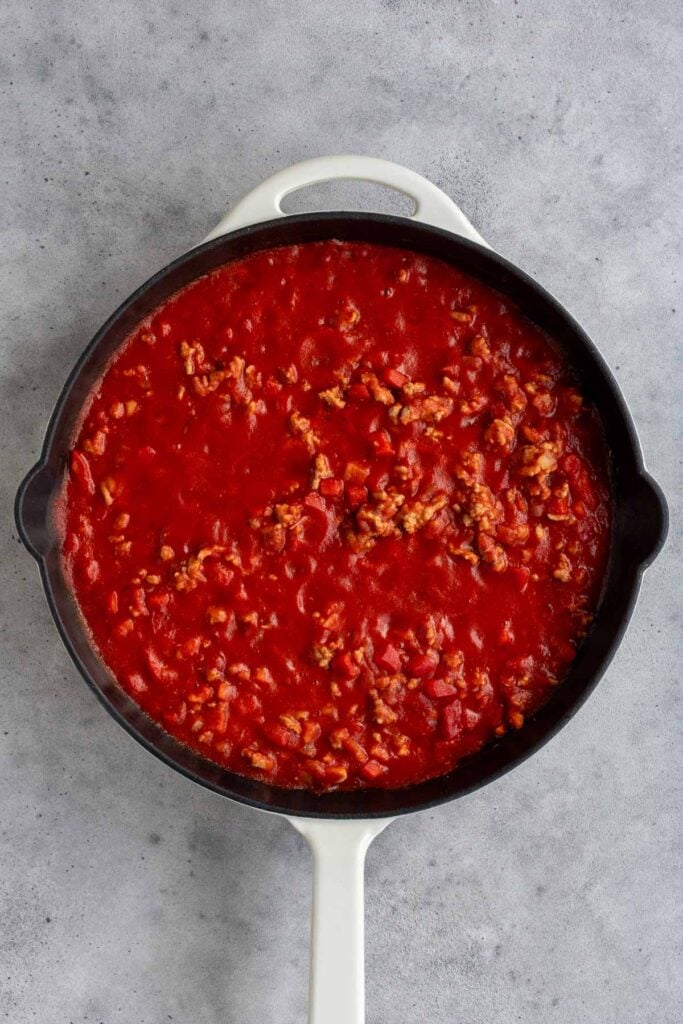
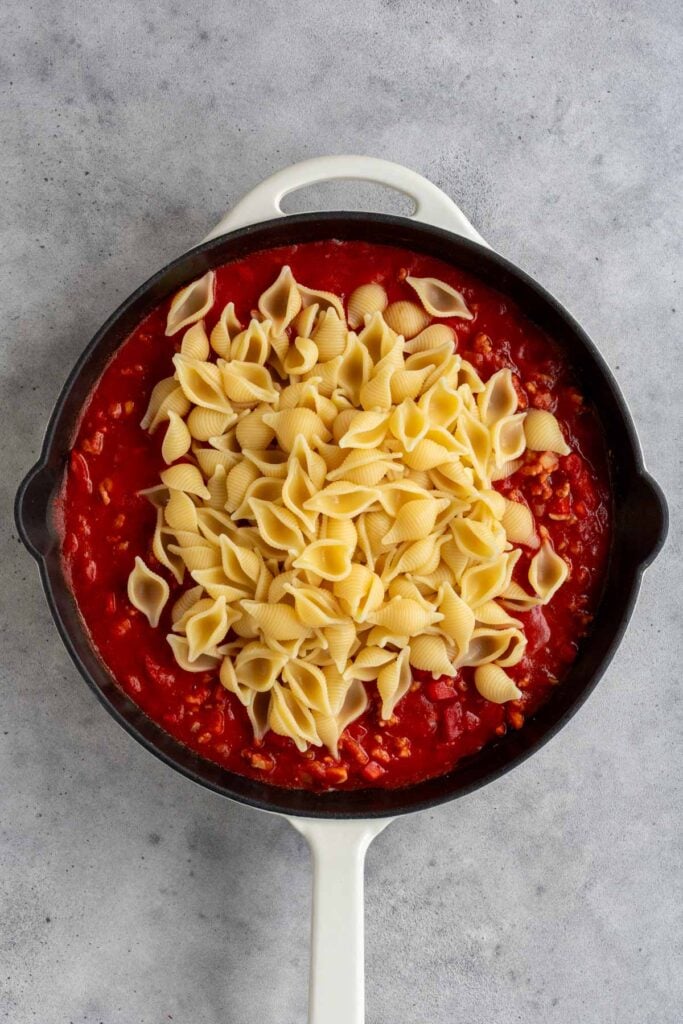
Dietary Adaptions
To Make it Gluten-Free: Use certified gluten-free pasta.
To Make it Dairy-Free: Omit the mozzarella cheese or use dairy-free cheese instead.
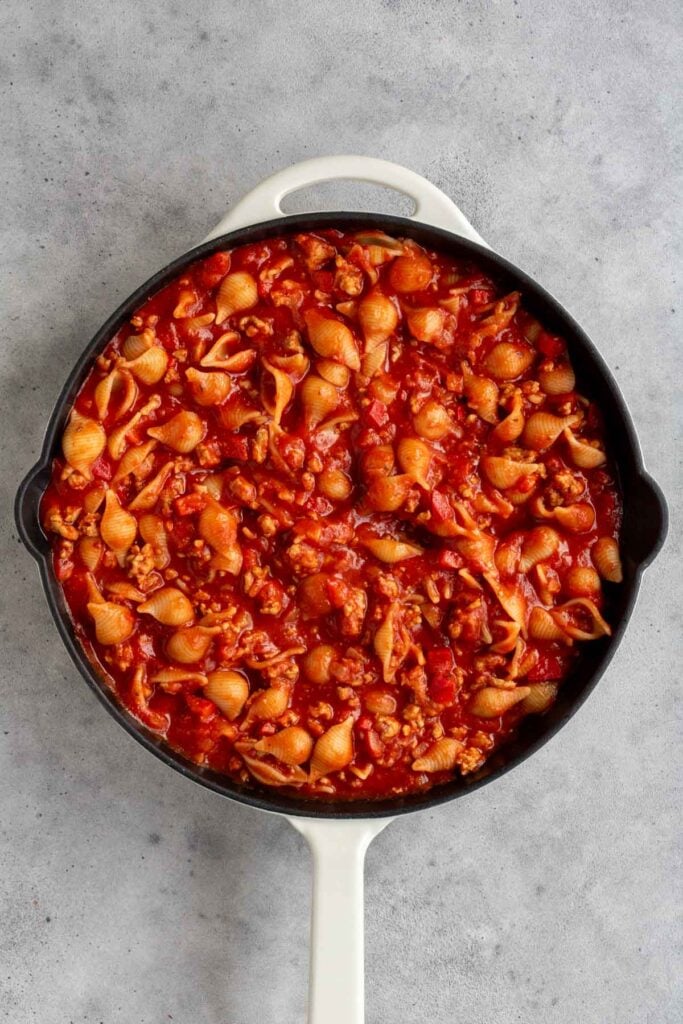
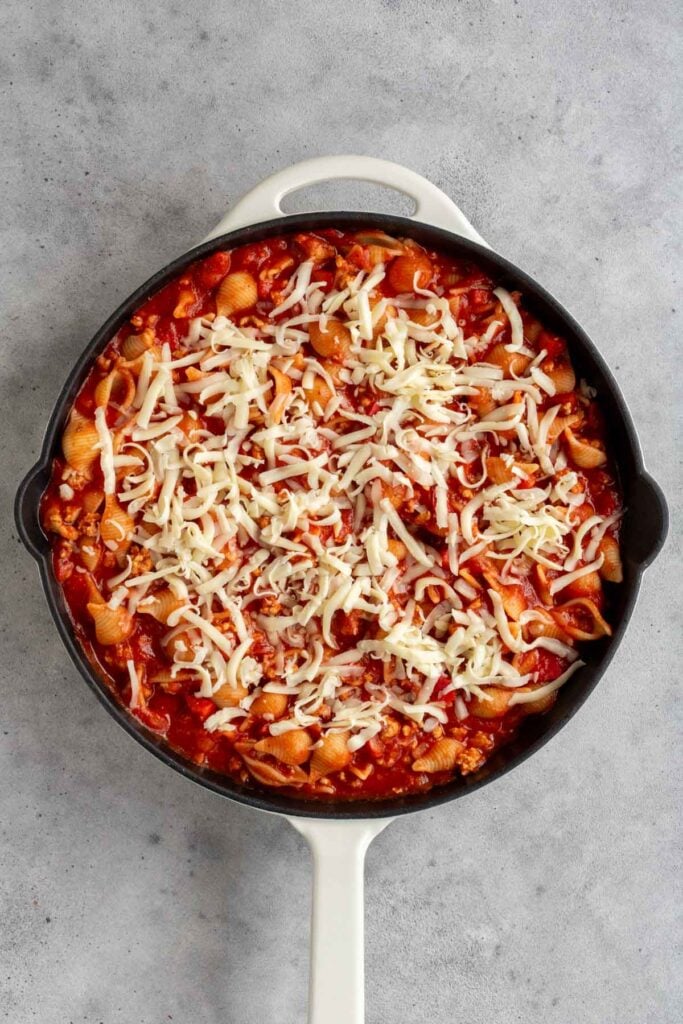
Red’s Nutrition Tip
Whether you choose to use white pasta or whole wheat pasta, this turkey pasta bake is still an incredibly healthy meal. While whole wheat pasta contains slightly more fiber, regular pasta and whole wheat pasta have a similar calorie, protein, and carbohydrate content and can both be included in a healthy diet, regardless of your health goals.
Serving Suggestion
This ground turkey pasta dish is a great source of protein, carbohydrates, and healthy fats. It can be enjoyed on its own as a balanced meal or served with a side of vegetables to add some fiber and micronutrients, such as:
- Steamed broccoli
- Steamed asparagus
- Garden Salad
You could also cook some additional vegetables into the pasta sauce, such as:
- Fresh or frozen spinach
- Diced zucchini
- Diced carrots
- Cherry tomatoes
If you want to make the dish a little heartier and more filling, I’d recommend serving it with a side of crusty bread.

Storage + Reheating
To Refrigerate: Allow any leftover turkey pasta to cool completely and then transfer it to an airtight container and store it in the fridge for up to 5 days.
To Freeze: Once cooled completely, leftover ground turkey pasta bake can be stored in an airtight container in the freezer for up to 3 months.
To Reheat: Allow leftovers to thaw, then reheat them in the oven at 350°F for 10-20 minutes or in the microwave for 2-3 minutes.

More Ground Turkey Recipes:
- Greek Turkey Meatballs
- Ground Turkey Meal Prep Bowls
- Butternut Squash Turkey Chili
- Turkey Taco Skillet
- Korean Ground Turkey Rice Bowls
- Turkey Pumpkin Chili

Ground Turkey Pasta Bake
This baked ground turkey pasta recipe is packed full of protein and ready in 30 minutes. Serve it with a side of vegetables or salad with crusty bread for a quick, easy, and healthy dinner.
-
Prep Time: 10 minutes
-
Cook Time: 20 minutes
-
Total Time: 30 minutes
-
Yield: 4 servings
-
Category: Dinner
-
Method: Stovetop
-
Cuisine: American
Ingredients
- 10 ounces shell pasta, dry (about 3 cups)
- 1 tablespoon olive oil
- 1 pound ground turkey
- 1 onion, diced
- 2 cloves garlic, minced
- 1 red bell pepper, seeded and diced
- 1 teaspoon Italian seasoning
- 1/4 teaspoon red pepper flakes (optional)
- 28 ounces crushed tomatoes, marinara sauce, or tomato sauce
- 1 teaspoon salt
- 1 pinch black pepper
- 1 cup shredded mozzarella cheese
Instructions
- Preheat the oven to 400°F.
- Bring a large pot of salted water to a boil, add the pasta shells, and cook as per package directions until al dente. Once cooked, strain, and set aside.
- In a large oven-proof pan or cast-iron skillet on medium-high meat, warm the olive oil, then add the onions and cook for 3-4 minutes until tender. Then add the ground turkey to the pan and cook for an additional 4-5 minutes, breaking the turkey up with a wooden spoon or spatula, until it is mostly cooked through and no longer pink.
- Reduce to medium heat, add the diced bell pepper to the pan, stirring to mix it into the cooked turkey mixture, and cook for an additional 2-3 minutes until tender, then add the garlic, Italian seasoning, salt, and pepper, and cook for an additional 1-2 minutes until fragrant.
- Add the tomato sauce to the pan, stirring to incorporate it into the turkey mixture, and remove the pan from the heat. Taste the sauce and adjust seasoning with additional salt and pepper as needed.
- Add the cooked pasta shells to the pan, stirring again until well incorporated with the turkey and tomato sauce mixture, then top with shredded mozzarella cheese.
- Transfer the pan to the oven for 5-10 minutes until the cheese is melted and the sauce is bubbling around the edges. If desired, turn the oven to broil for 1-2 minutes until the top is lightly crispy and golden brown.
- Once cooked, remove the pan from the oven and sprinkle with grated parmesan cheese and fresh parsley or basil as desired, and serve immediately.
- Any leftover ground turkey pasta bake can be cooled and stored in an airtight container in the fridge for up to 5 days or in the freezer for up to 3 months.
Notes
To Use Ground Beef or Ground Chicken: Swap the ground turkey for equal parts ground beef or chicken.
To Use Onion Powder: Swap the onion for 1 teaspoon onion powder and add it in step #4.
To Use Garlic Powder: Swap the garlic cloves for 1 teaspoon of garlic powder in step #4.
Nutrition
- Serving Size: 1 serving
- Calories: 498 calories
- Sugar: 9 grams
- Fat: 17 grams
- Carbohydrates: 56 grams
- Fiber: 5 grams
- Protein: 33 grams
